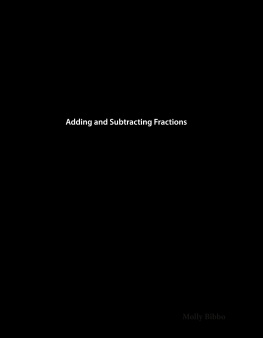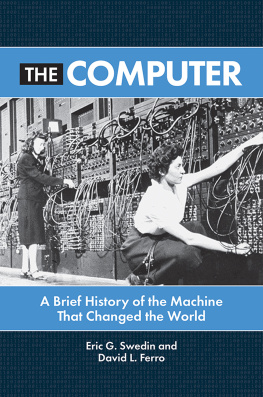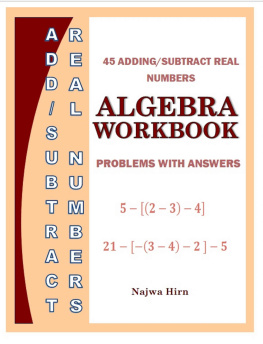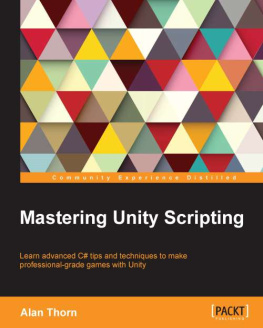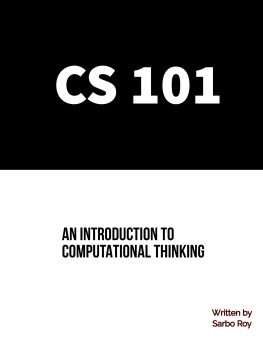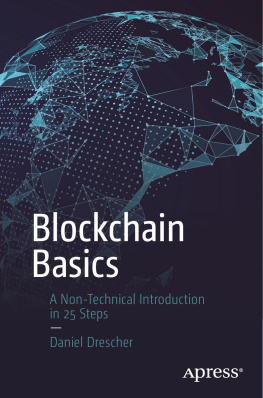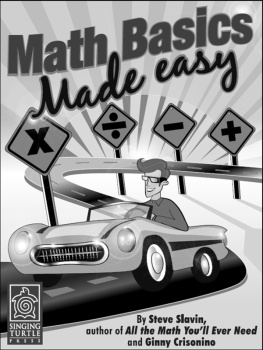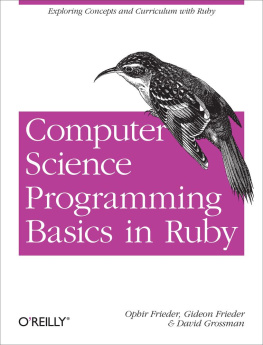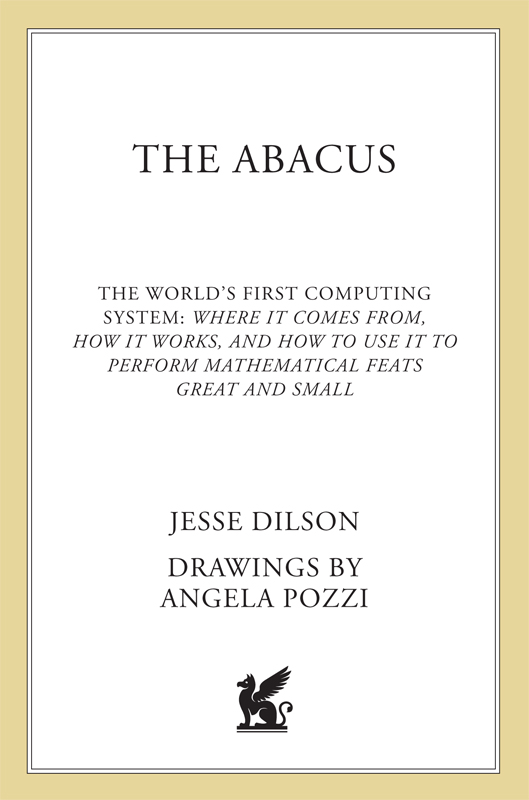
The author and publisher have provided this e-book to you for your personal use only. You may not make this e-book publicly available in any way. Copyright infringement is against the law. If you believe the copy of this e-book you are reading infringes on the authors copyright, please notify the publisher at: us.macmillanusa.com/piracy.
Contents
Publishers Note
More than twenty-five years after initial publication, we are proud to reissue Jesse Dilsons classic text, The Abacus, in its original form. While readers will no doubt find references to computer hardware and electronic computers anachronistic, we have decided not to alter them, since the binary system Dilson describes is still relevant to todays computer technology. As for the abacus itself, it remains untouched by the decades and centuries.
To William and Rose
The quotations at the chapter headings are all taken from what is perhaps the greatest book for young people ever written, Alices Adventures in Wonderland, by Lewis Carroll. Under his true name of Charles Lutwidge Dodgson, Carroll was himself a mathematics professor.
The White Rabbit put on his spectacles. Where shall I begin, please your Majesty? he asked.
Begin at the beginning, the King said very gravely, and go on till you come to the end: then stop.
1. Ten is a round number
Mention the number 10, and people will say, Now theres a nice round number.
And it is. It is around us all the time, in fact. Just look at your hands and you will find ten fingers. People are equipped from birth with two hands with five fingers on each, making a grand total of ten fingers per person.
What we have just written is known as a mathematical statement. But such statements have to be demonstrated. And the way to demonstrate that each person has ten fingers is simply to make a count of them. Nothing is easier; you dont have to be an expert mathematician to count up to ten.
Of course, counting fingers is too simple. All the same, it is an idea important to learning to use an abacusthe idea of grouping by tens. A fancier name for this idea is the decimal system, a name for which the ancient Romans are responsible. Our word decimal comes from the Latin decem, meaning ten. The English word abacus is also taken directly from Latin; it was this name the ancient Romans applied to their type of computer.
The Romans were hardly the first to use a computer based on the decimal system. They borrowed their abacus from the Greeks, who called it the abax, and the Greeks, in turn, borrowed it from an even more ancient people. The chances are that the first men on earth, shivering in their clothing of animal skins in dank caves, hadnt as yet invented a really useful calculating device, but they knew about the decimal system just the same. They must have used their ten fingers for counting then, just as we sometimes use them for counting now. In fact, our word digit means both finger and number.
Imagine a business deal between two cavemen. One enters his friends cave with a bundle of tiger skins over his shoulder. He dumps them on the ground and says:
Got six skins for you. I gave you seven skins the other day, if you remember, which means that you now have thirteen skins altogether.
Wrong! objects the other. You gave me twelve skins altogether. Six and seven are twelve.
The first man looks at him scornfully. That shows how ignorant you are, he says. Look here. And he proceeds to count the sum on his fingers, proving to his fellow businessman that seven and six really are thirteen.
Using fingers to calculate with is good enough where a few tiger skins are involved. But what happens when something more plentiful must be counted, for example, clam shells, such as some American Indian tribes used for trade purposes? How could a wealthy man add, say, 87 shells to 926 shells? If he had to rely on finger-counting to get the answer, it would take him hours.
With some kind of calculating machine, like an abacus, he could do the job swiftly and easily.
Can you do addition? the White Queen asked. Whats one and one and one and one and one and one and one and one and one and one?
I dont know, said Alice. I lost count.
2. The ancients
Look at the ear at the top right corner of this page. Can you answer the White Queens question? Certainly, if you stop and count all the ones slowly. This is easy to do if the question is put in written form, as it is here. But when the question is spoken, at a normal speed, it isnt easy to keep up with, as Alice found.
Suppose, though, that the White Queen had merely held up three fingers and asked, How many do you see? Alice would not be stumped for a moment; she would need no more than a glance to say Three!
And that is one thing mathematicians mean when they speak of a number sense: the ability to recognize a quantity at once without going to the trouble of counting it out. Most of us, looking at a group of four pebbles, for example, can recognize that there are four in the group. We may even recognize five. But for seven or more, we might have to do some counting.
Primitive cavemen probably had the same kind of number sense, but that was about the limit of their mathematics. Even their ability to count was not too strong. They may have had words in their spoken language for two or three, or even for twelve and thirteen. But the chances are that they had no words for quantities greater than that. They used expressions like many or great to describe large amounts simply because they could not count that high.
Although primitive man had a spoken language, he had not as yet invented a way of writing down his thoughts. The best he could do was draw pictures. We know that he was a clever artist because he left sketches in the caves of Spain and other parts of the world. But it was to take thousands of years before he could set down so good a record of his ideas that someone else could read it and understand exactly what he was trying to say. It was to take even longer before he could invent a way of counting.
But that did not stop him from making some needed calculations. Even before he found how to write numbers, he had a way of keeping records.
The cave dweller often kept sheep; he needed their skins for clothing, their milk and flesh for food, and their horns for musical instruments of a simple kind. Naturally, he hated to lose even one of these valuable animals. He must have found a way to count his sheep when he herded them into their pens at night, and to count them again when he let them out the next morning to graze.
How did this primitive man, who could barely count on his fingers, manage to keep track of a large herd of sheep? Perhaps he used a handful of pebbles. For every sheep he drove into the pen, he dropped one pebble into a pot; in the morning, he took one pebble out of the pot for every sheep he let out of the pen. If he found a pebble still in the pot when all the sheep had gone, he knew that either a wolf had made off with one of his animals or a neighbor cave-dweller had absently slipped it into his own flock. He would then look for the robber with fire in his eye. If, on the other hand, a sheep still remained in the pen after all the pebbles had been removed from the pot, he would know that he had somehow gotten richer overnight and would probably forget to mention it to his neighbor.
Thus, a bunch of pebbles may have been the earliest calculating machine. Our own language hints at that. If you look up the word calculate in the dictionary, you will find that it comes from the Latin word calculus, which means pebble.


